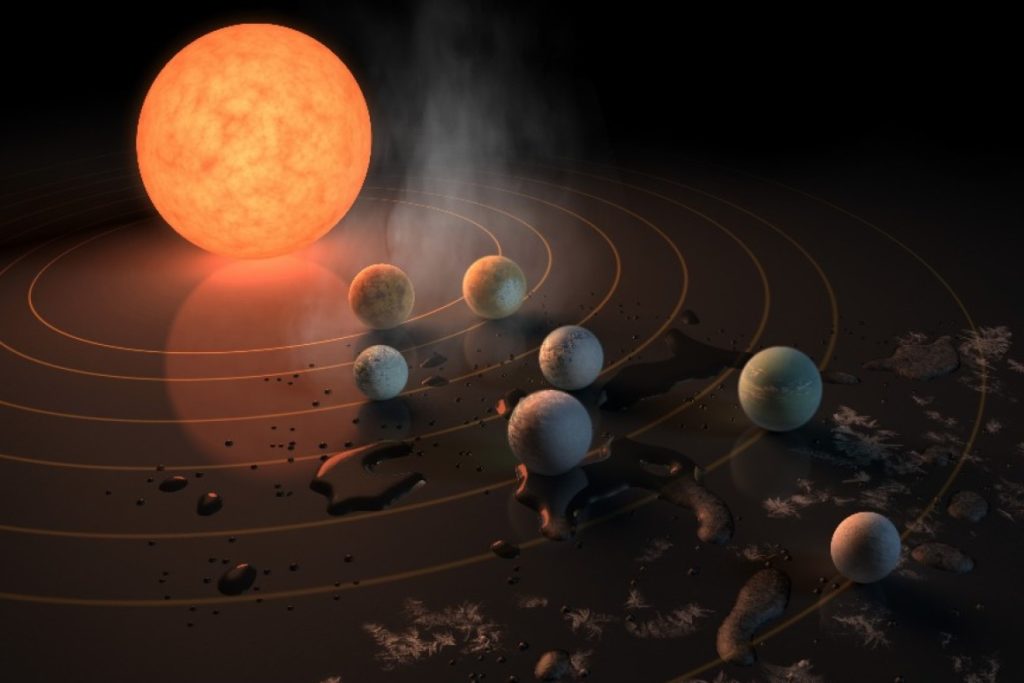Do people wonder how cosmologists discover each one of those exoplanets circling stars in inaccessible heavenly bodies?
For the most part they utilize the travel strategy. At the point when a planet goes in the middle of its star and an onlooker, the light from the star diminishes. That is known as a travel. On the off chance that space experts watch a planet travel its star a couple of times, they can affirm its orbital period. They can likewise begin to comprehend different things about the planet, similar to its mass and thickness.
The planet Mercury just traveled the Sun, surrendering all of us a nearby take a gander at travels.
Mercury travels the Sun just 13 or 14 times each century. The last one was in May 2016, and the following one will be in 2032.
At the point when cosmologists recognize an exoplanet with the travel strategy, it’s just the initial step to understanding the planet.
Understanding the planet starts with understanding the star it circles. Cosmologists can gauge the star’s size by watching its range. When they know the star’s size, at that point the subtleties of the dunk in light brought about by the planet’s travel can reveal to them the size of the planet.
At that point cosmologists can utilize another apparatus, the outspread speed strategy, to decide the planet’s thickness. Indeed, even a monstrous host star will feel the gravitational pull from a small circling planet. As the exoplanet pulls on its host star, the star moves somewhat. That makes the star’s light move, which space experts can quantify. By consolidating that estimation with the planet’s size, cosmologists can discover the thickness of the exoplanet.
Obviously, people definitely know a ton about Mercury. Here are a portion of the fundamental realities:
Mercury needs just 88 days (in reality just shy of 88 days) to circle the Sun. It’s the speediest planet to do as such, subsequently its name.
Mercury is tidally secured to the Sun what’s known as a 3:2 reverberation.
It has the littlest hub tilt of earth at just 1/30th of a degree.
Mercury has most likely been topographically dynamic for billions of years.
One of the biggest effect pits in the Solar System, the Caloris Basin, is on Mercury.
Indeed, even with all we think about Mercury, there are as yet numerous inquiries. Be that as it may, it takes orbiters and landers to respond to those inquiries. In case people’re asking why people haven’t any orbiters around Mercury, and no meanderers or landers, there are valid justifications.
Mercury’s position so near the Sun implies that any rocket that visits Mercury needs to battle with the Sun’s incredible gravity. It’s substantially more confounded than sending an orbiter to Mars, for instance. Mercury’s speed is high, as well. It’s around 48 km/second (30 miles/second.) Compare this to Mars, with an orbital speed of just 24 km/second (15 miles/second.) That implies that it takes a great deal of vitality to arrive at an exchange circle. What’s more, since Mercury has no environment, an air braking move to enter circle is not feasible.
NASA’s Mariner 10 and MESSENGER shuttle have both visited Mercury. Sailor 10 didn’t generally circle the planet, yet performed three entirely close fly-bys. It gave us that Mercury had an intensely cratered surface, much like the Moon. Beforehand, this detail was escaped ground telescopes.
At that point came NASA’s MESSENGER shuttle. It entered a curved circle around Mercury that gave the shuttle three snappy fly-bys. It was the main rocket to circle Mercury. A primary objective of the MESSENGER crucial to picture the side of the planet that Mariner 10 couldn’t see. Errand person caught right around 100,000 pictures of Mercury, contrasted with Mariner 10, which caught less than 10,000.
The following rocket to visit Mercury will BepiColombo. BepiColombo is a joint strategic the ESA and JAXA. It propelled in 2018 and will arrive at Mercury in 2025. It’s really two orbiters: a magnetometer test that will enter a curved circle, and a mapping test with rockets to place it into a roundabout circle.
Each time people develop our comprehension of our own Solar System, the more people can comprehend far off galaxies. There’ll be connects between what people see in Mercury’s travels of the Sun, and what people discover from our tests. Our experience of watching Mercury, at that point visiting it, will no uncertainty instruct cosmologists something about what people can hope to discover in other universes.
Disclaimer: The views, suggestions, and opinions expressed here are the sole responsibility of the experts. No State Today USA journalist was involved in the writing and production of this article.
